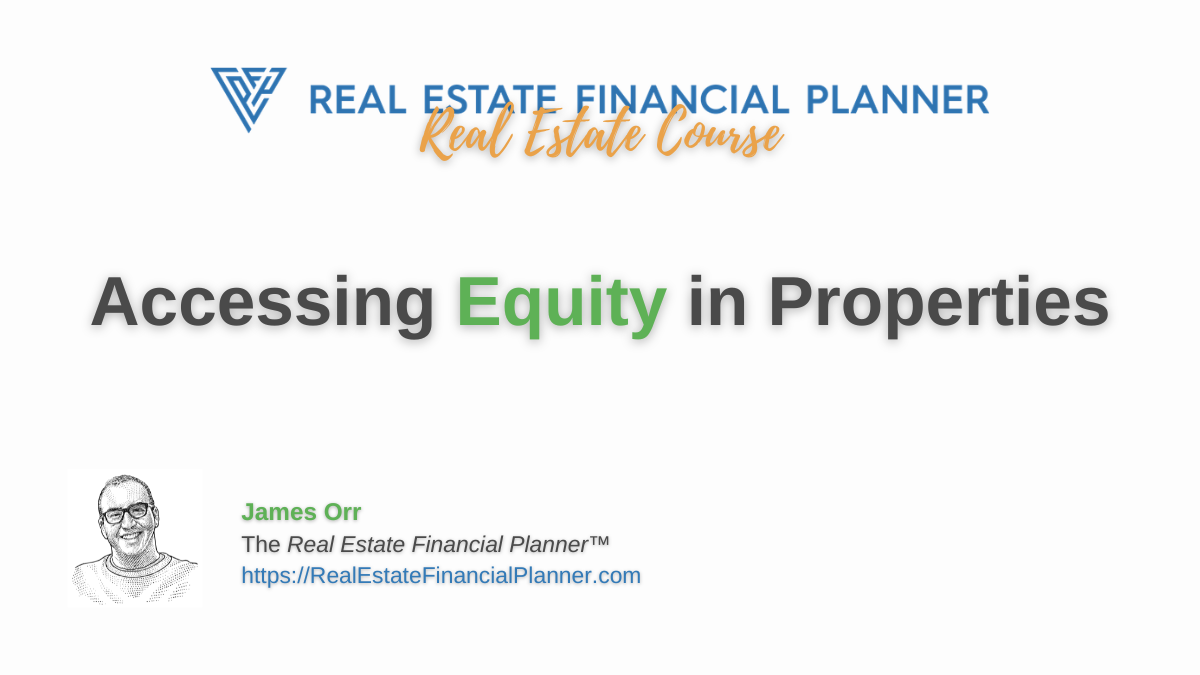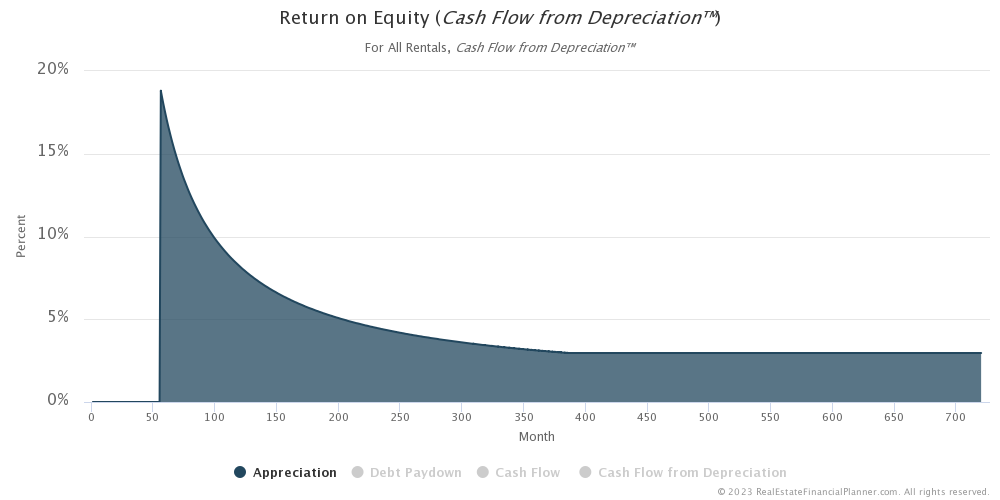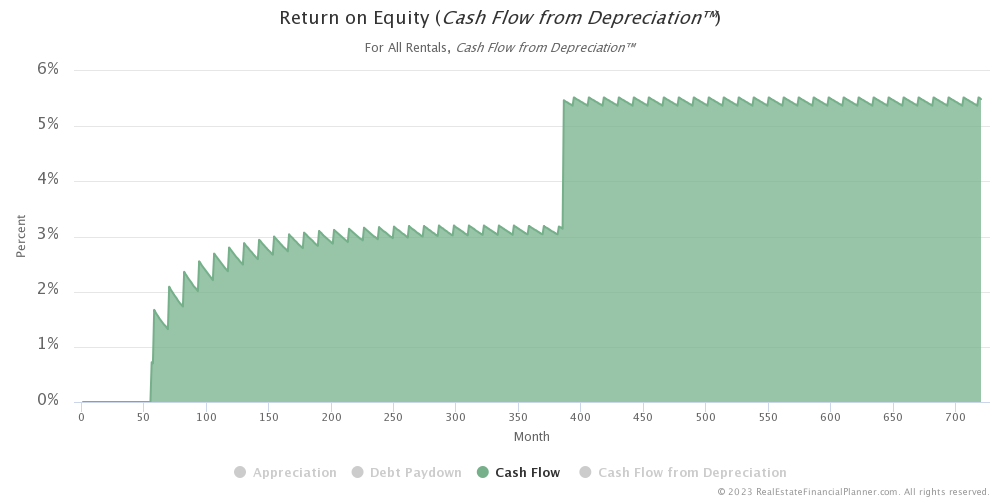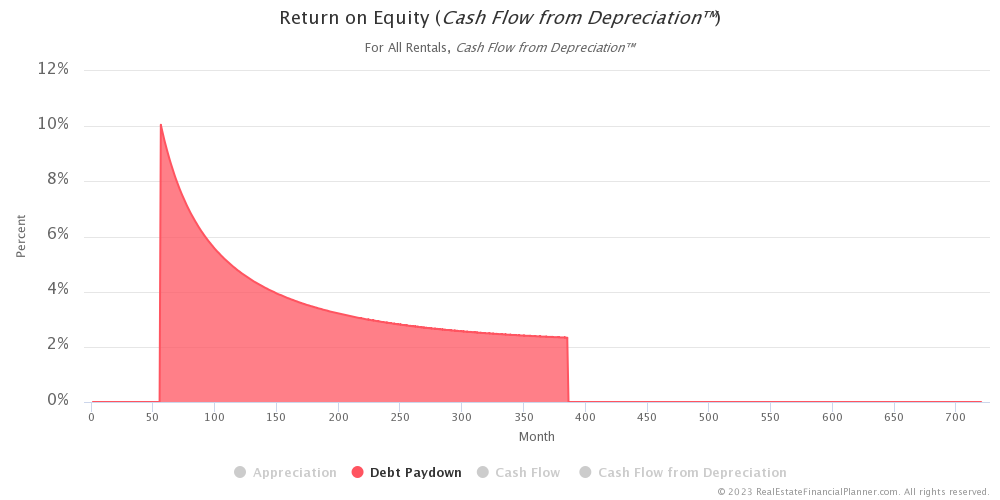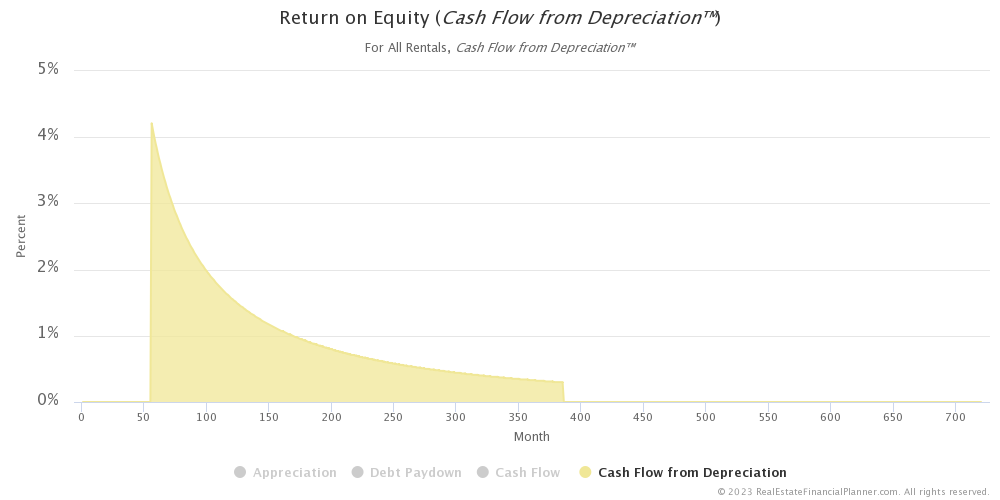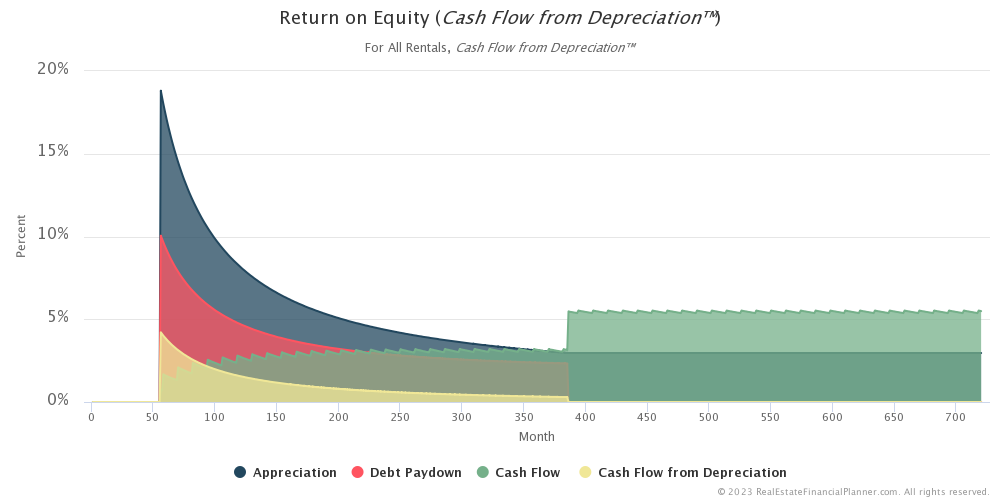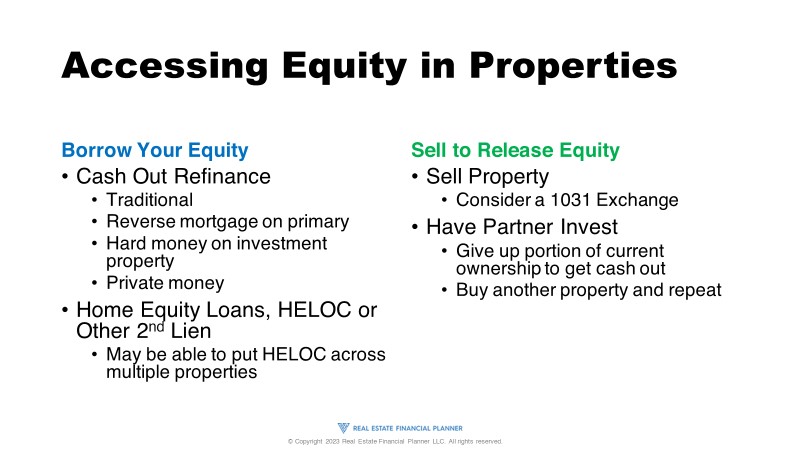Investing in rental properties can be a great way to build long-term wealth. However, as your equity in the property grows, your return on equity tends to go down over time. This can make it challenging to maximize your returns and achieve your financial goals. In this article, we’ll explore how to access equity in rental properties and how to think about the Return on Equity and the Return on True Net Equity™.
Understanding Return on Equity
When you invest in a rental property, you’re earning money in several ways. You earn money from appreciation, debt paydown, Cash Flow from Depreciation™, and cash flow. However, as your equity in the property increases, your return on equity tends to go down over time. This is because the amount of money you’re earning on how much money you have tied up in the deal is decreasing.
While the dollar amounts you’re earning on the property may be going up, your return on equity is getting worse. This incentivizes you to access your equity and re-leverage up to buy properties where you can get back in the higher, more productive section of the return curve.
Return on Equity from Appreciation
The dollar amount you earn from appreciation on a rental property tends to increase the longer you own it and the higher the property value.
For example if you earn 3% from appreciation on a $500,000 property, your property went up in value $15,000 over a year. If several years later, the property is worth $600,000 and you’re still seeing 3% appreciation per year, that means you’re earning $18,000 on the $600,000 property from appreciation.
However, if we look at the return from appreciation divided by the equity we have in the property, the return on equity from appreciation tends to decline over time.
In fact, once the loan is paid off, the return on equity from appreciation eventually becomes just the appreciation rate.
Return on Equity from Cash Flow
Cash flow tends to increase as you hold onto a rental property. Rents tend to creep up with inflation. And, even though some of your expenses like taxes, insurance, maintenance and management tends to increase over time your mortgage payment (principal and interest) usually remains fixed which leads to improved cash flow.
However, when we look at cash flow divided by the equity in the property it tends to increase for awhile and then stabilize until the the property is paid off. Then, with a free and clear property the return on equity from cash flow becomes cap rate as shown in the chart above.
Return on Equity from Debt Paydown
Similarly, the amount you pay off on the mortgage with each monthly payment increases the longer you own the property.
But, when we look at the principal paid divided by the equity in the property, that return… return on equity from debt paydown tends to decrease over time until… eventually… the loan is completely paid off and that return goes to zero.
Return on Equity from Cash Flow from Depreciation™
The tax benefits you get from owning a rental property in the form of depreciation are established when you buy the property and remain static until the benefit disappears completely. With residential properties the tax benefit lasts for 27.5 years.
If we look at the return from this Cash Flow from Depreciation™ and divide it by the equity in the property, that return declines over time until it goes away completely.
Total Return on Equity
If we look at all 4 areas of return on one chart we can see the relative sizes of the returns divided by the equity on the property.
With this chart you can see the relative sizes of the returns divided by the equity on the property for each of the different returns.
Total Return on Equity – Summed
But, what if we wanted to see the total return if we summed up each individual return? That’s what the chart above shows.
The return on equity is highest when you first acquire the property and as your equity grows the return decreases… pretty rapidly.
After you payoff the mortgage, your return from debt paydown goes to zero. Once you exhaust your time for claiming depreciation, Cash Flow from Depreciation™ falls away. At that point you’re left with unleveraged appreciation rate and Cap Rate on your property as your return on equity from a free and clear proprety.
Maximizing Return on True Net Equity
When you’re thinking about accessing equity in rental properties, it’s important to think about your Return on True Net Equity™. This is because when you access your equity, you’re not just looking at the raw equity in the property. You also need to consider the costs associated with accessing that equity, including closing costs, real estate commissions, capital gains taxes, and depreciation recapture taxes.
Maximizing your Return on True Net Equity™ means maximizing the return you’re earning on the money you would walk away with if you sold the property. This is the amount of money you’ll take and invest somewhere else, and it’s important to know what return you can earn on that amount.
Accessing Equity in Rental Properties
There are two main ways to access equity in rental properties: borrowing your equity or selling to release equity.
Borrowing Your Equity
Borrowing your equity involves pulling cash out of the property by doing a cash-out refinance, using a home equity loan, or getting a second lien on the property. You can also use a hard money loan or a private money loan to borrow your own equity.
Selling to Release Equity
Selling the property outright is another way to access your equity. You’ll need to pay any associated costs, including capital gains taxes, depreciation recapture taxes, and real estate commissions. You can also do a 1031 exchange, which allows you to defer paying taxes on the gains from selling the property if you reinvest the proceeds into another property.
Another way to release equity is to have a partner come in and invest in your deal. They’ll buy part of your equity, and you’ll give up a portion of your ownership to get some cash out. You can use this cash to buy another property and repeat the process.
Deal Analysis Spreadsheet
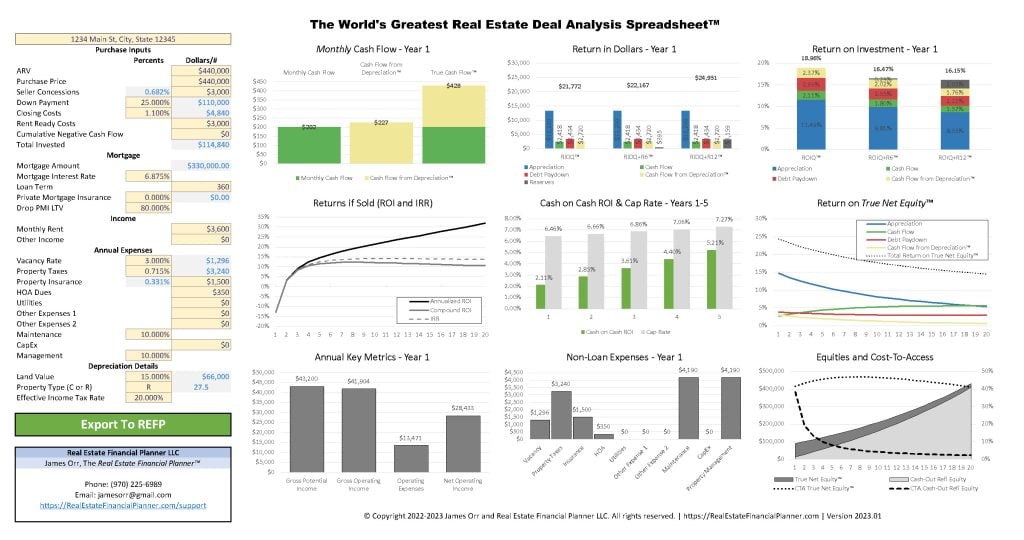
The World’s Greatest Real Estate Deal Analysis Spreadsheet™ is a free spreadsheet we provide for analyzing buy and hold deals. It has a lot of additional information about equity, return on equity, cost to access equity and True Net Equity™ built right into the spreadsheet for you to use as well.
Conclusion
Maximizing your return on equity in rental properties is key to achieving your financial goals. By understanding your return on equity and your Return on True Net Equity™, you can make informed decisions about when and how to access your equity. Whether you choose to borrow your equity or sell to release equity, it’s important to consider the costs associated with accessing that equity. With the right approach, you can access your equity and continue to build wealth through rental property investments.
